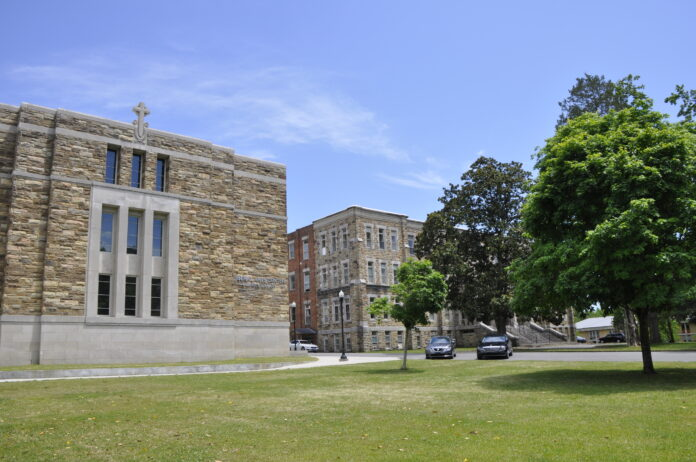CULLMAN, Ala. – St. Bernard Preparatory School was recently awarded a $5,000 grant as part of a $1 million grant program from the Tennessee Valley Authority (TVA) to develop science, technology, engineering and math (STEM) education projects across the Tennessee Valley.
STEM is an educational program that aims to integrate traditional pedagogy and real-world applications, providing for contemporary, structured learning environments. To facilitate in-depth understanding, STEM students apply classroom knowledge to various kinds of hands-on projects. Collaborating together in groups, students are able to develop and assess their hypotheses through discussion and problem-solving.
The grant will give St. Bernard students the opportunity to investigate a small stream and a tributary of Eight-Mile Creek, located on the school campus, as a viable source of potable water for the community. They’ll also test it to see if it might be usable as a recreational resource for swimming and fishing. Math instructors Kim Whaley and Chanda Dabbs, in collaboration with chemistry and biology instructors Shelly Perry and Martha Wells worked together to create the plan.
Chemistry students will test the water quality by testing temperature, pH, dissolved oxygen, nitrites and phosphates in water samples. At the same time, math students will test the water by using calculus to find the average amount of water flowing through the stream per day and per month. Likewise, biology students will test for coliform bacteria, depth visibility and the presence or absence of macroinvertebrates to assess water quality and clarity.
Students will conduct their tests on a bi-weekly basis. They’ll also record, analyze and compare data to EPA guidelines to determine water’s viability for community use. By analyzing the data and interpreting the results, students will be led to make connections between the actions of a community and the subsequent impact on its local water environment.
As the project progresses, the students will become more and more familiar with how chemistry, biology, environmental science and math concepts learned in class can be used in the real world. They will also learn how to follow correct experimental procedures, interpret and evaluate the obtained data and look for evidence of the source of pollutants. Additionally, they’ll use the Riemann Sum formula and accumulation functions to calculate the volume of the water in the stream. Once they estimate the quantity of the water, they’ll be able to determine what size community the water supply will maintain. Furthermore, they will be introduced to other environmental science concepts such as watershed, runoff and the implications of eutrophication (a process causing increased algae growth) due to increased nutrient levels. Perhaps most importantly, they’ll realize the importance of being good stewards of our waterways.
Whaley said students will assess their findings by answering lab questions. In addition to writing and balancing equations, they’ll also be tasked with preparing a report for a fictitious supervisor. As they prepare the report, they will interpret and evaluate test data against current standards for our area, and draw conclusions as to the origin of any contaminants that they find in their water samples.
“Students will be evaluated on presentations, vocabulary and pre-lab questions, a lab sheet with lab analysis questions thoughtfully and accurately answered and a written report assessed for writing skills, strength of argument and supporting evidence,” Whaley said.
“TVA is focused on supporting clean-energy technologies and STEM education that helps today’s students develop the skills needed to work in these careers,” said Jeannette Mills, TVA executive vice president, and chief external relations officer. “Innovation is the key to success, and it’s inspiring to contribute to the next generation’s visionaries.”






















